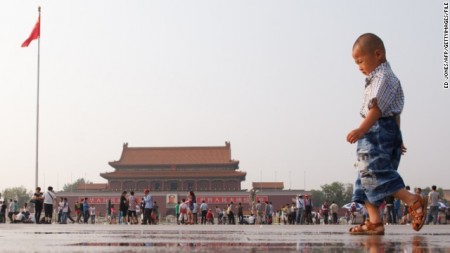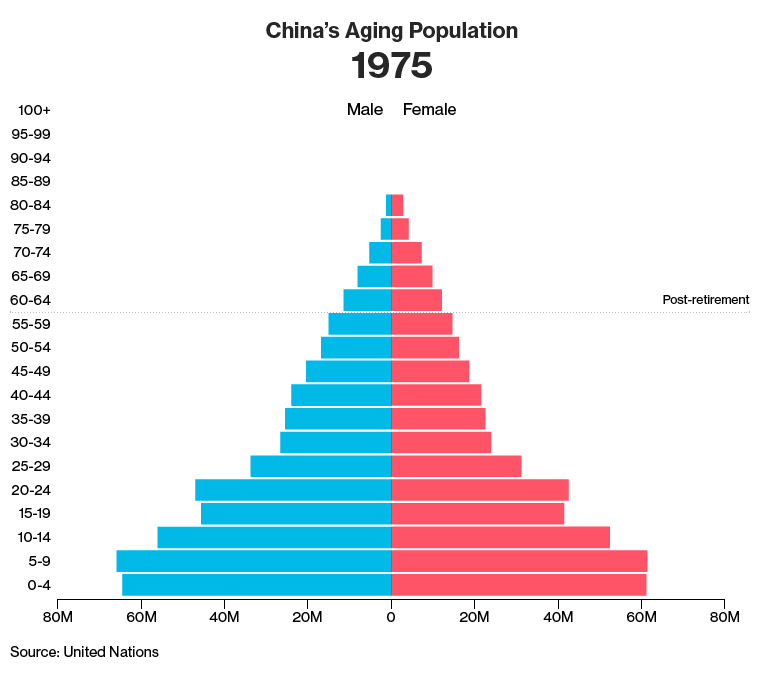November 3, 2015 – When China decided to implement a one-child per family policy in 1979 it was seen by some as the first serious attempt by a government to stop runaway global population growth (see picture below). At the time China contained 20% of the world’s people. The government in some respects believed it could become the poster child for family planning showing the rest of the world that China had it right, that the country could arrest population growth in a constructive way.
At the time, with so little respect for individual citizen’s rights, a top-down, centrist fiat was certainly doable within the nation. China introduced carrot and stick policies. If a couple had one child they received free education and healthcare for their offspring. A couple that chose to have two or more had to pay taxes and received no benefits. China made birth control and abortions free. And China even got foreign support for its efforts – the United Nations, the international arm of Planned Parenthood, and the World Bank, to name just a few. All jumped on the bandwagon to help China wrest its growing population to a halt. The argument was this: without China’s effort to control population the world in the 20th century would quickly surpass the 7 billion mark and from there who knows what would happen. Interestingly the world surpassed 7 billion some years ago and we are heading to a global population by 2050 that, if present trends hold, will exceed 9.5 billion.
So in respect to controlling world population growth, China’s one-child policy failed totally. There is no doubt that within China population growth halted. Without the policy population forecasters estimate China would have 300 million more people today than it does. But unforeseen consequences for China have resulted because of ancient cultural norms, and because the policy proved too successful.
The ancient cultural norms, a preference for boys over girls meant that up to 90% of pregnancies where the known sex of the baby was female were terminated through abortion. That has resulted in a disproportionate preponderance of males in China today.
At the same time by halting population growth a demographic shift has rippled through the country. China’s population is getting older faster. The World Health Organization forecasts that by 2050, 35% of the population will be 60 years of age or older. That means China will be in the same boat as Japan, a largely grey-haired society with fewer people available within the workforce to support the cost health burden of an aging population. Japan didn’t institute birth control policies like China to get into the fix it is in today. Instead the country enjoys benefits and healthcare that has lengthened citizens’ lives dramatically. It is the first “super-aging” society on the planet. By 2030 20% of Japanese will be 75 years of age or older.
The consequence for both China and Japan, one through draconian policy, and the other through natural declining birthrates and increasing longevity, is a rapidly aging workforce. Aging populations put additional stresses on countries. Pension payouts, rising healthcare costs, cognitive impairment leading to long-term care solutions are all part and parcel of intended or unintended population control policies. At the same time revenue from taxes takes a hit as fewer citizens are available in the workforce.
This brings up the additional challenge that comes from ancient cultural preferences. Both China and Japan are not immigration-friendly countries. Despite the need to increase workforce capacity the two fail to attract immigrants from other countries and cultures. In protecting their homogeneous traditions they effectively exacerbate the problem of an aging population drawing on no replacements from countries where population growth is exceeding workforce capacity.
The Japanese have taken a unique approach in lieu of attracting foreigners to immigrate into Japan. They are building a robotic workforce to substitute for humans.
China in unleashing itself from its one-child policy now has to balance the books on a heavily skewed, predominantly male demographic. There are more men of eligible marriage age than women. This is particularly noticeable in urban environments where the one-child policy has been well enforced. In rural China it appears officials looked the other way, because according to Chinese researchers, in these settings families with two or more children are common. But rural China is rapidly changing as another population experiment is being undertaken by China’s central planners, the mass movement of its citizens to newly built, empty cities.
And a final consequence to China’s ending of its one-child policy – the millions of government officials that enforced the policy for the last three decades will all be out of work.
Talk about a panoply of unintended consequences.


















